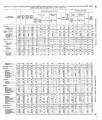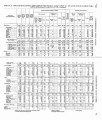| Title |
Annual Report of the Commissioner of Indian Affairs to the Secretary of the Interior for the Fiscal Year Ending June 30, 1922 |
| Subject |
Indian reservations; Federal government; Indians of North America; Maps; Work; Land use; Allotment of land; Treaties; Agriculture; Timber; Health; Indians of North America--Social life and customs; Water rights; Natural resources; Education; Indians of North America--Education; Culture; Livestock; Art; Employment (Economic theory); Peyote; Irrigation; Ute Indians; Indigenous peoples--North America |
| Keywords |
Annual Report; Indian Agency; Reservations; Tribal Funds; Land Rights; Allotment; Indian; White Relations; Native Americans |
| Publisher |
Digitized by J. Willard Marriott Library, University of Utah |
| Tribe |
Ute; Goshute |
| Language |
eng |
| Description |
Excerpts concerning Utah from the Annual Report of the Commissioner of Indian Affairs - Courtesy of the University of Wisconsin Digital Collections. The Commissioner of Indian Affairs provides a report regarding enrollment rates and curriculum in on- and off-reservation schools, treatment and prevention of diseases on reservations, farming and livestock raising techniques and their effects on the reservation economy, the perseverance of tribal art and culture despite an ever-growing sense of commercialism, the distribution of annuity payments and allotments, the development of new homes and industrial projects, the use of alcohol and peyote, marriage and divorce customs, etc. The Commissioner includes in his report charts outlining the demographic data of tribes living in the U.S. |
| Type |
Text |
| Coverage |
Uintah and Ouray Indian Reservation (Utah); Utah; Washington (D.C.); Goshute Reservation (Nev. and Utah) |
| Format |
application/pdf |
| Rights |
Digital Image © 2011 America West Center. All Rights Reserved |
| ARK |
ark:/87278/s6dc0xjc |
| Creator |
Burke, Charles H. |
| Date |
1922 |
| Spatial Coverage |
Goshute Reservation (Nev. and Utah); Uintah and Ouray Indian Reservation (Utah); Washington (D.C.); Utah |
| Setname |
uaida_main |
| ID |
377290 |
| Reference URL |
https://collections.lib.utah.edu/ark:/87278/s6dc0xjc |
































































